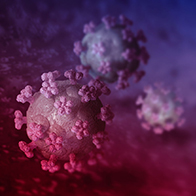03
Extended deadline: EXCITE Summer School 2020
The application deadline for this years EXCITE Summer School on Biomedical Imaging, planned for 31 August until 11 September 2020, has been extended to 4 May. Targeted at MSc and PhD students as well as scientists in industry, the EXCITE Summer School is dedicated to teaching cutting-edge techniques in biomedical imaging, including magnetic resonance imaging, positron emission tomography, infrared and optical microscopy, electron microscopy and X-ray imaging.
BRCCH urgent call for applications aimed to combat COVID-19

The Botnar Research Centre for Child Health (BRCCH) announces the launch of a fast-track call to address several critical areas related to the COVID-19 pandemic. The application deadline is 8 April.
Tips for working from home

Working from home for such a long period of time is a new challenge for us ETH members. Here is some advice from HR on how to make the best of the situation – while staying healthy in body and mind.
Start of ETH podcast series on #COVID-19

In response to these exceptional times, we are changing our monthly ETH Podcast into a series of short items dealing with various aspects of the novel form of coronavirus and all its ramifications.
COVID-19: Keep up-to-date on ETH Zurich and D-BSSE measures taken

Help to mitigate the spreading of the corona virus and follow the federal recommendations for standard precautions and social distancing. Check ETH Zurich's web-portal regularly on additional measures taken: https://bit.ly/3cRLzc2. And set an alert to the D-BSSE Wiki page on the department's status and regulations.
New technique for recording neuronal activity in vivo
In a collaboration with groups at the Stanford University, CA, USA, and the Crick Institute, UK, the Bio Engineering Lab headed by Andreas Hierlemann developed a new technique to measure neuronal signals in live brains. The technique combines bundles of long metal wires of a few micrometer diameter with planar silicon-based CMOS microelectronics technology. The new devices show excellent performance in reading out neuronal activity in awake moving mice.
Meet Alessio Buccino combining computational modeling and neuro-engineering

The postdoctoral ETH-fellow from Italy has a background in computational neuroscience and builds models that describe in detail the electrophysiological activity of neurons. After a rather bumpy start in Switzerland, he eventually had his first work day in the Hierlemann Lab, where he met "a vibrant and welcoming group". Once the coronavirus-curve flattens, he plans to explore the Swiss alps with his snowboard.
ETH Zurich switches to emergency operations

On 16 March, the Swiss Federal Council declared a national state of emergency. The entire population is being urgently called upon to minimise human contact for their own protection and the protection of others. ETH Zurich is doing everything in its power to help fight this pandemic and is therefore adapting its measures. Keep up-to-date on ETH Zurich's measures and regularly consult the FAQs on the dedicated website: https://bit.ly/3a1vA9s.
“We then calculate how fast the virus spreads”

How fast does the corona virus spread? Are there differences in the spreading in Wuhan, PR China, and Northern Italy? Tanja Stadler, head of the Computational Evolution group, responds to media questions and explains the statistical model that analyses the genetic genealogy of the pathogen (in German).
Circulatory failure is predictable

Researchers at ETH Zurich and Bern University Hospital have developed a method for predicting circulatory failure in patients in intensive care units – enabling clinicians to intervene at an early stage. Their approach uses machine learning methods to evaluate an extensive body of patient data. The results from this prototype were published in Nature Medicine.